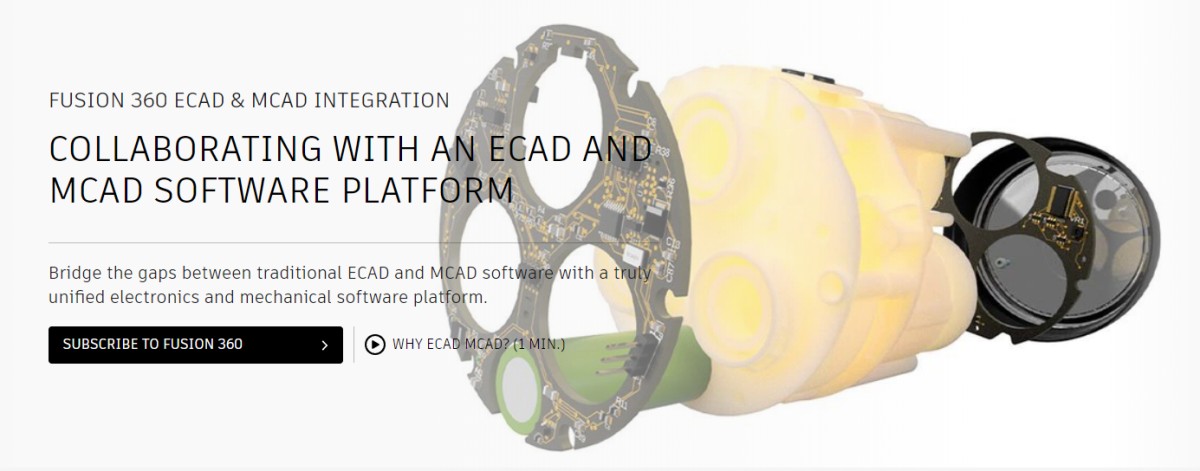
Electronic Computer-Aided Design (ECAD) software offers efficiency and simplicity when designing electrical components without introducing errors. In today’s world of fierce competition, inefficiency, and errors cannot be tolerated. If you continue to use manual, pencil, and paper methods to design your electrical components, manufacturing them could take a long time while increasing your costs for workforce and resources. The best way to achieve this goal is to automate the process with ECAD software that can help you design, modify, assemble, and simulate your components accurately and precisely so that your designs can be approved more quickly. Ultimately, it is possible to manufacture high-quality electrical components promptly. Therefore, let’s examine what ECAD software is and its benefits.
What’s ECAD Software?
Electronic Computer-Aided Design (ECAD) software is a circuit designer tool that creates and modifies electronic systems’ 3D and 2D layouts and diagrams. It is used to create, assemble, simulate, and compose electrical circuits. It differs marginally from CAD software for designing a particular component or assembly. On the other hand, ECAD software will help you design a complete electronic system with numerous components connected via electric circuits.
Example – Using ECAD software to design a printed circuit board (PCB) for a computer. Using the schematic view of the circuit design, an electrical designer creates a PCB layout and generates a 3D representation of the PCB component using 3D models.
ECAD software offers a variety of capabilities; therefore, selecting software that meets your organization’s unique requirements is necessary. The capabilities of ECAD software include the following.
- Diagramming is used to identify the electronic components and the signals that link them.
- Trace routing to determine connection paths.
- The layout features create a PCB outline and position components within it.
- 3D assembly to create the 3D model of a PCB that can detect interference within a system and manage heat dissipation from electronic components.
- Automated routing of conductors from electrical components.
- Multi-board functionality to design and layout multiple PCBs operating as a single system.
- Checking PCB designs against industry or company guidelines or rules and emphasizing issues that could affect PCB performance.
- Manufacturing exports to produce ECAM deliverables for PCB layer manufacturing.
- Collaboration features help team members collaborate on a design, add remarks, and give feedback to enhance the design.
Numerous other technologies may be required for error-free data exchange.
ECAE – To build an analysis model and simulate PCB performance, ECAE – Electrical Computer-Aided Engineering software uses the geometry produced with the help of ECAD software.
ECAM – Electrical Computer-Aided Manufacturing software uses ECAD exports to create tool paths for PCB layer production.
ECAD & MCAD: What’s The Difference?
ECAD software is primarily used for designing electronic components, while MCAD software is used for designing mechanical components. Some products require mechanical and electrical characteristics in today’s technologically advanced society. Therefore, electrical and mechanical teams can collaborate independently on a single platform and develop innovative components based on the requirements. The two teams can check to see if each component’s assembly is compatible. This is an additional advantage for the organizations. Additionally, you may need to perform a 3D analysis of the assembled products and visualize whether or not everything meets the requirements.
What Are The Uses Of ECAD Software?
By assembling electronic components, ECAD is used by numerous organizations to meet their electrical product designing and manufacturing requirements. It has applications in a variety of fields.
PCB Designing
Printed Circuit Boards (PCBs) contain various electrical components and electric circuits to power electronic devices. By adding each component to the required circuit and assembling them, electrical designers transform schematic diagrams into 3D layouts.
Documentation
The product must pass the analysis test before the manufacturing process can continue. ECAD software offers comprehensive documentation based on the input parameters and helps to analyze every design detail.
FEA
ECAD software can be used for Finite Element Analysis (FEA) to generate 3D objects from 2D data.
Why Do You Require ECAD Software?
ECAD software makes designing electronic components simply because it handles all the burdens so that you end up with an outstanding product. It saves you the trouble of drawing an electrical circuit manually with pencil and paper. Let’s briefly glance at the benefits of ECAD software for your business.
Streamlined Designing
The design process is easy when software is used rather than painstakingly creating a circuit. In addition to streamlining the process, it generates high-quality, error-free designs. You’ll have access to many tools and functionalities to design your components, such as drag-and-drop. In addition to a hassle-free experience, you can innovate with realistic 3D views.
Saves Time
Creating something from scratch can be challenging and time-consuming. By defining the ECAD requirements and fundamental parameters, ECAD software offers numerous pre-built components that you can use directly in your design. The software’s numerous options facilitate quick thinking and action. Therefore, saving time on designing will help you boost product productivity.
Improves Product Performance
Creating and assembling the component into the model is a partial step in the design process. The product must undergo testing procedures to check the correct passage of electricity throughout the circuit. Manual testing takes considerable time. With the help of ECAD software, you can test your product quickly and easily. Before finalizing the document for manufacturing, you can improve the product quality by rapidly rectifying software issues.
Transparency
ECAD software offers complete product visibility by preserving the transparency of every component based on material, color, etc. The 3D visualization of the product enables you to examine the product from every angle, allowing you to check the design and subtler details for errors.
Cost-effective
From concept to manufacturing, a final product requires a lot of cost, equipment, and workforce. ECAD software, on the other hand, saves a lot of money and time. ECAD software saves you time and resources by creating an error-free design that can proceed directly to the production phase without significant modifications. If you want to take advantage of these benefits and are searching for excellent ECAD software, here are a few options.
Best ECAD Software
As we curated, the best ECAD Software is listed below.
1. nanoCAD

nanoCAD API supports C, C++,.NET, VBScript, JavaScript, LISP, and COM. Additionally, it provides a familiar interface so that you feel at home while designing the component. Whether designing an electronic component or a product, you can achieve the desired speed to boost your productivity. Choose a plan that meets your needs and begins at $200 annually. Also available is a free trial of all modules.
2. Altium CircuitMaker

Using the Altium design tool, you can materialize your distinct concept. Altium CircuitMaker is schematic design software intended for the creation of electronic products. Without any issues, its robust engine and streamlined interface help you design more effectively. Altium allows you to create flexible electronic products with 16 plane layers, 16 signals, and no dimension restrictions. Its community library contains hundreds of components and is supported by an excellent Octopart database. Adding components to your designs is extremely easy; search the library by manufacturer part number or component parameters to find the correct component.
If you cannot locate the required component, add your design elements and components to the community library. You can share your design with your team, community, or the authors when it is complete. Collaborating with your team on the design will help you understand the design better and give you a clearer concept. Others can use Altium as a foundation to build something new or add features to the product. In addition, it offers the native 3D appearance of your product, Push-N-Shove routing, a multi-sheet schematic editor, topological auto-router, and DFM/DRC validated outputs. Download this free ECAD software to design your fantastic product with ease.
3. Creo

Using Creo software, you can create and innovate realistic products from your imagination. This 3D CAD solution helps you build better products by combining its proven and robust functionality with new technologies such as augmented reality, additive manufacturing, simulation, and generative design. Creo enables the design of high-quality products using transformative tools to increase market share and competitive advantage. It introduces various capabilities, from mechanical design to electronic components.
Creo’s easy-to-understand interface will help you through each step, from design to the finished product and meshing to simulation. Creo offers the most up-to-date features for every design you create and provides technologies for the ever-changing world. Creo introduces numerous packages based on a comprehension of your business’s requirements. The package’s price begins at $2,480. Sign up immediately and begin designing electronic products from scratch. Additionally, it offers a complimentary trial.
4. Fusion 360

Fusion 360 bridges the divide between traditional MCAD and ECAD software. This circuit designer will help you complete a mechanical and electrical product. Fusion 360 enables designers to collaborate autonomously on the same project within the design platform. Fusion 360 eliminates integrating third-party software, exchanging, translating, or exporting files. It provides an entire solution for data administration, mechanical design management, and PCB design. You can also work with your teams to better understand the problem and complete the project within the allotted time frame.
The platform provides a single dataset and 3D PCB data, including core material, components, board copper, and more, so that you can verify, validate, and analyze on MCAD software to satisfy the product specifications. In addition, integrating ECAD and MCAD software gives you electronics tools for simulation, schematics, manufacturing, management, etc., and 3D design tools for drafting, PCB integration, sheet metal, and more.
Using Fusion 360, early thermal simulation of the PCB can be performed efficiently. In addition, integrate your entire product management with the cloud platform. In addition to gaining access to sophisticated features such as generative design, nesting, additive manufacturing, machining, and fabrication, you can uncover extensions if they operate efficiently. Their monthly plans range from $42 to $987 per three years. Additionally, they provide a 30-day money-back guarantee so that you can determine whether the tool meets your requirements.
5. SOLIDWORKS

With data management tools and cloud-connected solutions, interaction and collaboration with team members and stakeholders are easy. In addition, design errors can be eliminated with the help of analysis tools, and data can be accessed from any browser regardless of location. SOLIDWORKS provides a user-friendly design interface, and electrical schematics can be integrated with 3D models. It eliminates the need to perform repetitive actions while designing schematics. You will receive a shared database for ECAD and MCAD to ensure consistency and reduce documentation time. This software brings your electronic products to life. Explore how it simplifies the design process through a free trial.
6. IntelliCAD

IntelliCAD, one of the best CAD development platforms, includes professional-grade software solutions for designing high-quality products. It enables you to concentrate on the essentials, namely the vertical solutions of your client’s product. It introduces extensive APIs in multiple languages so that developers can create bespoke applications, vertical solutions, and bespoke objects. IntelliCAD includes several features to help you design quickly and enhance the efficacy of your final product.
Importing pdf files and point files, such as .txt and .csv files, is possible. Now it’s easy to introduce dynamic blocks; press Ctrl to insert parameters-defined points continuously. In addition, a feature for modifying table cells will support cell and table designs. Additionally, the clone command makes it easy to replicate entities rapidly. In addition, the view transition option can be customized to provide a simple animation between view rotation, pan, view adjustments, and magnification. In addition to groups, importing shapefiles, geographic maps, multiple drawing layouts, and array entity editing, you will receive additional features.
Also, Take A Look At:
The Bottom Line:
ECAD software includes capabilities to help you design, assemble, and simulate your electric circuits and components effectively and without errors. It also saves you time and resources while enhancing your productivity, allowing you to deliver on-time, high-quality final products. Choose appropriate ECAD software from the preceding list based on your requirements, and design your electrical components efficiently.


